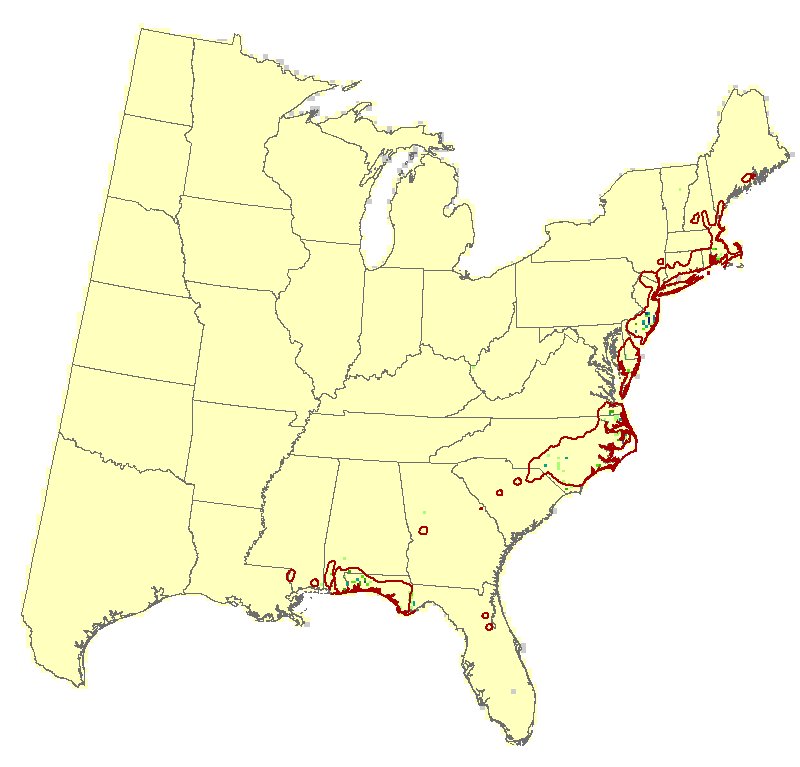Atlantic white-cedar (Chamaecyparis thyoides)
Model Reliability: Low
| GCM SCENARIO | % Area Occ | Ave IV | Sum IV | Future/Current IV |
|---|---|---|---|---|
| Actual | 0.3 | 8.6 | 831 | N/A |
| RFimp | 0.4 | 3.9 | 498 | 0.6 |
| CCSM45 | 1.5 | 1.6 | 724 | 1.45 |
| CCSM85 | 1.6 | 2.1 | 942 | 1.89 |
| GFDL45 | 2.1 | 1.9 | 1187 | 2.38 |
| GFDL85 | 1.5 | 2.1 | 964 | 1.94 |
| HAD45 | 0.9 | 2.3 | 601 | 1.21 |
| HAD85 | 0.4 | 2.8 | 336 | 0.67 |
| GCM45 | 2.5 | 1.2 | 837 | 1.68 |
| GCM85 | 1.9 | 1.4 | 748 | 1.5 |
Regional Summary Tree Tables
Summaries for tree species are available for a variety of geographies, in both PDF and Excel format. These summaries are based on Version 4 of the Climate Change Tree Atlas
Interpretation Guide
Atlantic white cedar is quite rare (0.3% of eastern US) and sparse (though highly important where it occurs) along the Gulf and MidAtlantic coasts and its model reliability is low with low adaptability, so we score overall capability as very poor even though habitat was modeled to stay the same. The model presents new habitat appearing far inland (West Virginia) which has not possibility of getting colonized naturally according to SHIFT.
Family: Cupressanceae
Guild: pioneer, moist site, shade tolerant
Functional Lifeform: medium sized evergreen tree
| 3 | -0.61 |
| -1.21 |  |
MODFACs
What traits will impact Atlantic white-cedar's ability to adapt to climate change, and in what way?:
Primary Positive Traits
Dispersal
Primary Negative Traits
Fire topkill Drought Environment habitat specificity



